
Operation Tonga was the codename given to the airborne operation undertaken by the British 6th Airborne Division between 5 June and 7 June 1944 as a part of Operation Overlord and the D-Day landings during World War II.
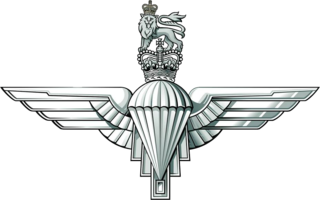
The Parachute Regiment, colloquially known as the Paras, is the airborne infantry regiment of the British Army. The first battalion is part of the Special Forces Support Group under the operational command of the Director Special Forces. The other battalions are the parachute infantry component of the British Army's rapid response formation, 16 Air Assault Brigade. The regiment, along with the Guards, are the only line infantry regiments of the British Army that have not been amalgamated with another unit since the end of the Second World War.
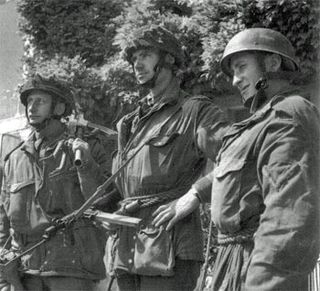
The 6th Airborne Division was an airborne infantry division of the British Army during the Second World War. Despite its name, the 6th was actually the second of two airborne divisions raised by the British Army during the war, the other being the 1st Airborne Division. The 6th Airborne Division was formed in the Second World War, in mid-1943, and was commanded by Major-General Richard N. Gale. The division consisted of the 3rd and 5th Parachute Brigades along with the 6th Airlanding Brigade and supporting units.

The 5th Parachute Brigade was an airborne forces formation of brigade strength, raised by the British Army during the Second World War. Created during 1943, the brigade was assigned to the 6th Airborne Division, serving alongside the 3rd Parachute Brigade and the 6th Airlanding Brigade.

The 3rd Parachute Brigade was an airborne forces brigade raised by the British Army during the Second World War. The brigade was initially part of the 1st Airborne Division, but remained in Britain when that division was sent overseas, and became part of the 6th Airborne Division, alongside 5th Parachute Brigade and 6th Airlanding Brigade.

The 6th Airlanding Brigade was an airborne infantry brigade of the British Army during the Second World War. Created during May 1943, the brigade was composed of three glider infantry battalions and supporting units, and was assigned to the 6th Airborne Division, alongside the 3rd and 5th Parachute Brigades.

Brigadier Stanley James Ledger Hill, was a British Army officer, who served as commander of the 3rd Parachute Brigade, part of the 6th Airborne Division, during the Second World War.
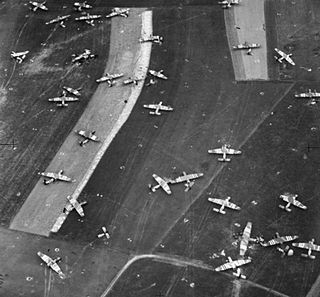
Operation Mallard was the codename for an airborne forces operation, which was conducted by the British Army on 6 June 1944, as part of the Normandy landings during the Second World War.
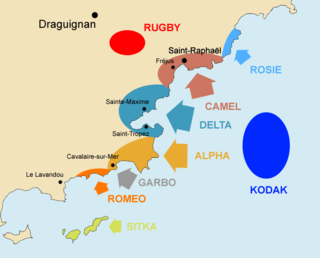
The British 2nd Parachute Brigade was part of the Operation Rugby airborne landings in August 1944. The operation was carried out by an ad hoc airborne formation called the 1st Airborne Task Force. Operation Rugby was itself part of the Operation Dragoon invasion of Southern France by the American 7th Army. The airborne task force landed in the River Argens valley with the objective of preventing German reinforcements from reaching the landing beaches. The landings were mainly an American operation and the brigade was the only British Army formation involved.

The 6th Airborne Division advance to the River Seine occurred in August 1944, in the later stages of the Battle of Normandy, following the German Army's defeat in the Falaise Pocket, during the Second World War.

The capture of the Caen canal and Orne river bridges was an operation by airborne forces of the British Army that took place in the early hours of 6 June 1944 as part of the Normandy landings of the Second World War. The objective was to capture intact two road bridges in Normandy across the River Orne and the Caen canal, providing the only exit eastwards for British forces from their landing on Sword Beach. Intelligence reports said both bridges were heavily defended by the Germans and wired for demolition. Once captured, the bridges had to be held against any counter-attack, until the assault force was relieved by commandos and other infantry advancing from the landing beach.

The 7th Parachute Battalion was an airborne infantry battalion of the Parachute Regiment, formed by the British Army during the Second World War. The battalion was raised in November 1942 by the conversion of the 10th Battalion, Somerset Light Infantry to parachute duties. It was initially assigned to the 3rd Parachute Brigade, part of 1st Airborne Division, but moved to the 5th Parachute Brigade, alongside the 12th and 13th Parachute battalions, of the 6th Airborne Division soon afterwards.

The 8th (Midlands) Parachute Battalion was an airborne infantry battalion of the Parachute Regiment, raised by the British Army during the Second World War. The battalion was created in late 1942 by the conversion of the 13th Battalion, Royal Warwickshire Regiment to parachute duties. The battalion was assigned to the 3rd Parachute Brigade, serving alongside the 7th and 9th Parachute battalions, in the 1st Airborne Division before being reassigned to help form the 6th Airborne Division in May 1943.

The 9th Parachute Battalion was an airborne infantry battalion of the Parachute Regiment, raised by the British Army during the Second World War. The battalion was created in late 1942 by the conversion of the 10th Battalion, Essex Regiment to parachute duties. The battalion was assigned to the 3rd Parachute Brigade, alongside the 7th and 8th Parachute battalions, then part of the 1st Airborne Division but was later transferred to the 6th Airborne Division.

The 13th (Lancashire) Parachute Battalion was an airborne infantry battalion of the Parachute Regiment, raised by the British Army during the Second World War. The battalion was formed in May 1943 by the conversion of the 2/4th Battalion, South Lancashire Regiment to parachute duties and was assigned to the 5th Parachute Brigade in the 6th Airborne Division.

The 5th (Scottish) Parachute Battalion was an airborne infantry battalion of the Parachute Regiment, raised by the British Army during the Second World War.

The 10th Battalion, The Parachute Regiment was an airborne infantry battalion of the Parachute Regiment, originally raised as the 10th (Sussex) Battalion by the British Army during the Second World War.

The 6th Parachute Battalion was an airborne infantry battalion of the Parachute Regiment raised by the British Army during the Second World War.

The Battle of Bréville was fought by the British 6th Airborne Division and the German 346th Infantry Division, between 8 and 13 June 1944, during the early phases of the invasion of Normandy in the Second World War.
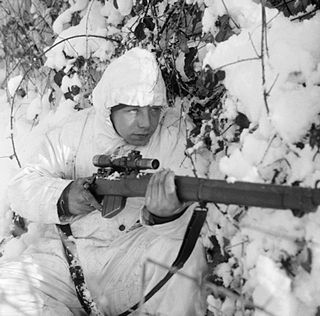
The Battle of Bure was part of the Battle of the Bulge, which lasted from 3 to 5 January 1945 during the final months of the Second World War. The battle was fought as part of the Allied counterattack to force the Germans from ground that they had captured and which had forced the Allies on the defensive. XXX Corps with British 6th Airborne Division attached, was to clear the area east of Dinant, Rochefort, Grupont and Bure in Belgium. Bure was secured after nearly three days of heavy fighting whilst Gupont and Rochefort were both cleared with little resistance and the advance continued.
















